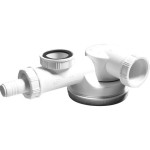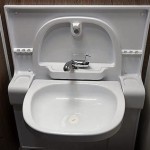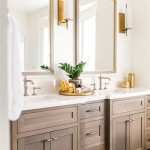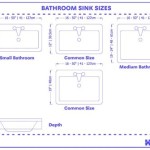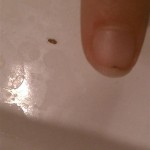Can Decorative Mirrors Be Used In Bathrooms?
Decorative mirrors are often considered for enhancing the aesthetic appeal of living spaces, and their potential use in bathrooms warrants specific consideration. The bathroom environment presents unique challenges, primarily due to high humidity and potential water exposure. Therefore, the suitability of decorative mirrors for bathroom use depends on several factors, including the mirror's construction, materials, the presence of protective coatings, and the overall ventilation of the bathroom itself. Careful evaluation of these aspects is crucial to ensure longevity and prevent damage to the mirror.
Traditional mirrors, often consisting of a glass substrate with a reflective backing, are vulnerable to corrosion and delamination when exposed to excessive moisture. The reflective backing, typically made of silver or aluminum, can oxidize or degrade over time, leading to dark spots, peeling, and a diminished reflective quality. Decorative mirrors, which may incorporate intricate frames, embellishments, or specialized finishes, may have additional points of vulnerability if these elements are not designed to withstand humid conditions. Therefore, choosing the right type of decorative mirror, implementing preventative measures, and maintaining adequate ventilation are essential for successful bathroom integration.
Mirror Construction and Materials
The primary determinant of a decorative mirror's suitability for bathroom use is its construction and the materials utilized. Mirrors intended for bathroom environments should ideally possess a durable, moisture-resistant backing. Traditional silver-backed mirrors are particularly susceptible to corrosion. Alternative backings, such as those using copper-free silver or specialized polymer coatings, offer enhanced protection against moisture penetration and subsequent degradation. These materials create a barrier that prevents water vapor from reaching the reflective layer, significantly extending the mirror's lifespan in humid conditions.
The glass itself can also be a factor. While standard float glass is commonly used, tempered glass offers increased strength and safety. In the event of breakage, tempered glass shatters into small, relatively harmless pieces, reducing the risk of injury. This is particularly important in bathrooms where slips and falls are more likely. Additionally, the thickness of the glass can contribute to its overall durability. Thicker glass is generally more resistant to warping or distortion, which can occur over time due to moisture absorption.
The frame of a decorative mirror also requires careful consideration. Wood frames, especially those made of untreated or unsealed wood, are prone to warping, cracking, and rot in humid environments. Metals, while generally more resistant to moisture, can still corrode if not properly treated. Chrome-plated or powder-coated metal frames offer a good balance of durability and aesthetics. Synthetic materials, such as PVC or acrylic, are inherently moisture-resistant and can be excellent choices for bathroom mirrors. When selecting a decorative mirror, it is important to verify that all components are designed to withstand the rigors of a humid environment.
Protective Coatings and Sealants
The application of protective coatings and sealants plays a crucial role in safeguarding decorative mirrors against moisture damage. Several types of coatings are available, each offering different levels of protection and potentially affecting the mirror's appearance. Specialized coatings designed to create a hydrophobic surface can repel water and prevent it from adhering to the mirror's surface. These coatings not only reduce water spots but also provide a barrier against moisture penetration.
Edge sealing is another critical aspect of mirror protection. The edges of a mirror are particularly vulnerable to moisture infiltration, as they expose the underlying layers of the reflective backing. Applying a high-quality sealant to the edges can prevent water from seeping in and causing corrosion or delamination. The sealant should be specifically formulated for use in humid environments and resistant to mold and mildew growth.
For decorative mirrors with intricate frames or embellishments, protective coatings should be applied to all exposed surfaces. In the case of wood frames, multiple coats of a waterproof sealant or varnish are essential to prevent moisture absorption. Metal frames should be treated with a corrosion-resistant coating, such as a powder-coat finish. Choosing mirrors with pre-applied protective coatings or applying them as a preventative measure can significantly extend the mirror's lifespan and maintain its aesthetic appeal.
Installation and Bathroom Ventilation
Proper installation and adequate bathroom ventilation are essential complements to selecting a moisture-resistant decorative mirror. Even the most durable mirror will eventually succumb to damage if exposed to consistently high levels of humidity and inadequate airflow. The installation process should prioritize creating a moisture-proof seal between the mirror and the wall to prevent water from seeping behind the mirror.
Using a waterproof adhesive specifically designed for mirrors is crucial for secure and moisture-resistant mounting. The adhesive should be applied evenly to the back of the mirror, ensuring full contact with the wall surface. In addition to adhesive, mechanical fasteners, such as screws or clips, can provide added stability, particularly for larger or heavier mirrors. All fasteners should be made of corrosion-resistant materials, such as stainless steel, to prevent rust and staining.
Effective bathroom ventilation is paramount for minimizing humidity levels. An exhaust fan should be installed to remove moisture-laden air after showering or bathing. The fan should be properly sized to the dimensions of the bathroom to ensure adequate air exchange. Regularly cleaning the fan to remove dust and debris will maintain its efficiency. Furthermore, ensuring that the bathroom is well-ventilated even when not in use, by leaving the door slightly ajar, can help to prevent moisture buildup. A dehumidifier can also be considered in bathrooms that consistently experience high humidity despite adequate ventilation. Proper ventilation not only protects the mirror but also contributes to overall bathroom hygiene and prevents mold and mildew growth, thus creating a healthier environment.

Pros And Cons Of Using Decorative Mirrors In The Bathroom

Decorative Bathroom Mirrors 8 Advantages And Disadvantages

Pros And Cons Of Using Decorative Mirrors In The Bathroom
:max_bytes(150000):strip_icc()/transitional-powder-room-5a20b3567bb28300196f2193.jpg?strip=all)
13 Beautiful Mirrored Bathrooms

27 Bathroom Mirror Ideas For Every Style Wall Decor
:max_bytes(150000):strip_icc()/midcentury-bathroom-5a1f3dfb4e46ba001aa8b230.jpg?strip=all)
13 Beautiful Mirrored Bathrooms

20 Best Bathroom Mirror Ideas Designs For Sinks And Vanity

Elegant Bathroom Wall Mirrors To Enhance Your Experience

30 Cool Ideas To Use Big Mirrors In Your Bathroom Digsdigs

Elegant Bathroom Wall Mirrors To Enhance Your Experience
